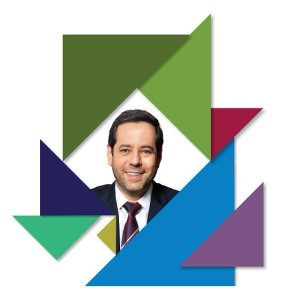
New Business Models Put Pharmacies in New Role
Pharmacies started as drug preparation centers but they have evolved to become an integral component of health access. Two trends are responsible for the transformation, according to ANAFARMEX: digitalization and the concept of well-being.
The first, technology, has provided a path to different business models that give the patient more freedom while allowing pharmacies to expand their services. More is on the way, say industry leaders like Emiliano Hernandez, Co-founder of Mexican pharmacy startup Knaou. “Without a doubt, technology will change the Mexican pharmacy sector as it has changed other sectors such as retail.”
Hernandez adds that new technologies can address gaps in healthcare services. Knaou, for example, provides a subscription-based system that facilitates medication delivery. “People do not want to leave their homes and they do not want to spend time traveling to pharmacies or other stores for the products they need,” he says.
Existing technologies and emerging applications that give patients greater control of their well-being also act as bridges of communication between the patient and the pharmacy, says Francisco Cantú, Director General of Fármacos Proasse. He says that apps can help remind patients when to take their medications and the information those patients feed into the system helps the pharmacy know how advanced they are in their treatment. This would allow a pharmacy “to contact patients and let them know when their prescription needs refilling. They could then program the delivery of the medicine.”
Perhaps the biggest change in the pharmacy landscape over the past decade is the increase in pharmacy-adjacent clinics. According to the Ministry of Health, every month, more than 10.6 million people in Mexico visit these clinics at a cost of between MX$20 (US$1.02) and MX$50 (US$2.54). Just 10 years ago, there were 2,956 offices of this type. Today, there are 16,000 across the country.
But it is not just pharmacy chains. Retailers have also moved into the health space, helping to expand access to care by taking advantage of the traffic through their stores and proximity to patients. Walmart of Mexico and Central America (Walmex), for example, operates in over 648 stores across six countries in the region: Costa Rica, El Salvador, Guatemala, Honduras, Nicaragua and Mexico. “Walmex receives over 5 million clients per day, which provides a great opportunity to increase access to health,” says Ricardo Martí, Commercial Director Pharmacy, Health and New Businesses of Walmart, Bodega Aurrera, Superama and Sam’s Club.
PREVENTION
Mexico’s aging population poses another dilemma, and many see prevention as the cure. An aging population is a challenge for the public health system because there are more and more elderly patients with many multimorbidities, such as cardiovascular diseases, cancer, chronic kidney disease and diabetes, according to the article The Aging population: A challenge for public health, published by the Colombian Journal of Anesthesiology. Mario Sicilia, Commercial Director of Laboratorio Médico Polanco, is among those who believe the burden on Mexico’s public health management will only worsen. “At this point, public healthcare services are unable to provide care to their affiliates with their current budget and this situation will only worsen as chronic diseases become more prevalent,” he says.
WHO recommends that governments around the world increase prevention strategies to reduce health costs. Globally, WHO estimates that 35 million deaths occur each year due to noncommunicable diseases. About 15.8 million, or 40 percent, are preventable, premature deaths from heart attacks, strokes, diabetes or asthma.
Clinical laboratories can play a key role in improving diagnoses while helping to create a prevention culture in Mexico. “It is necessary to transform our healthcare system into one based on prevention. In this mission, clinical diagnostic laboratories, alongside genetic testing, can play a pivotal role,” José Carlos Pérez y Pérez, Executive President of Grupo Diagnóstico Proa.
Laboratorio Médico Polanco’s Sicilia adds that a focus on prevention and early diagnosis can be a cost-efficient health mechanism: “It is just a matter of running the numbers to conclude that it is less expensive to prevent a disease than to provide care for the sick.”
















